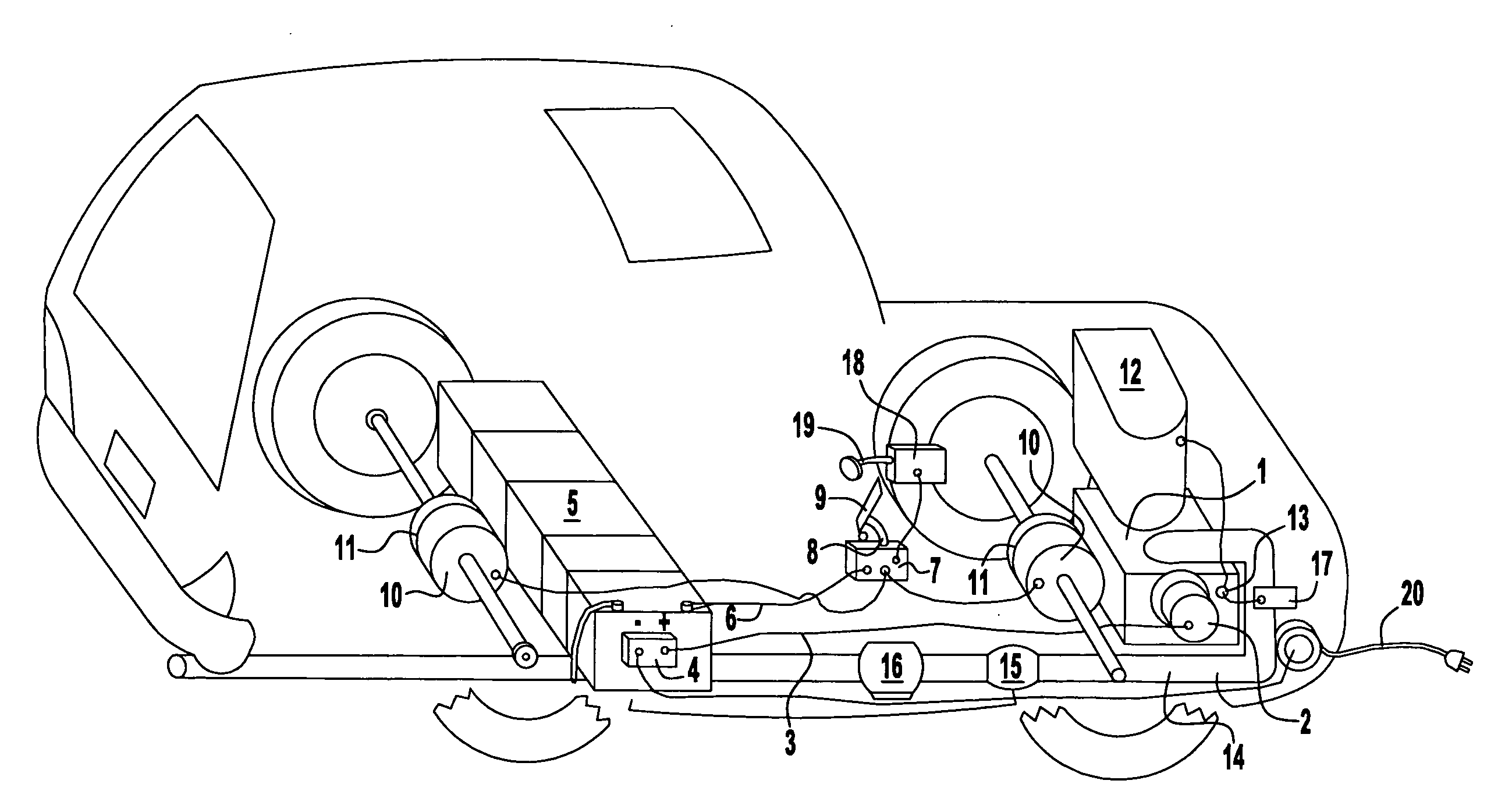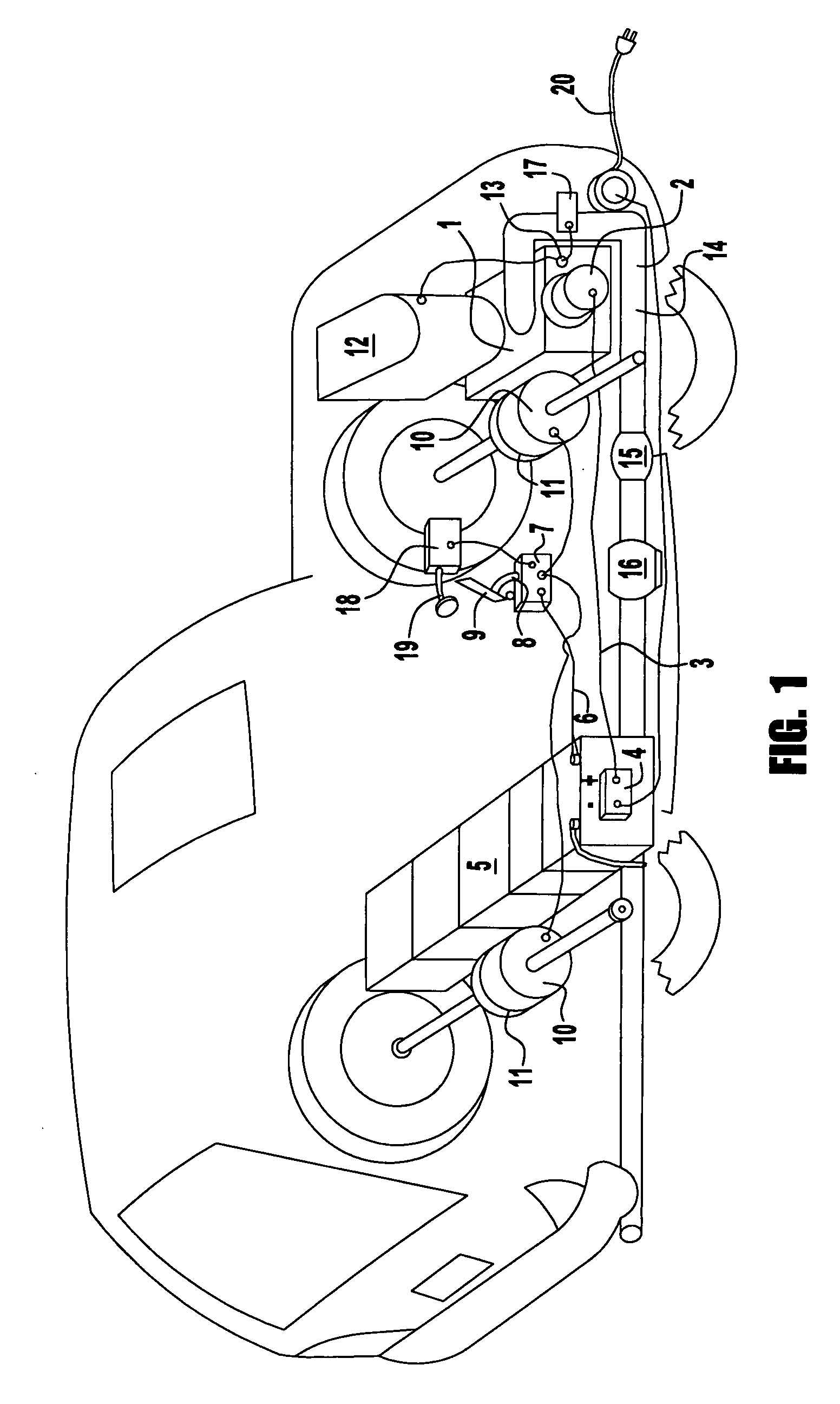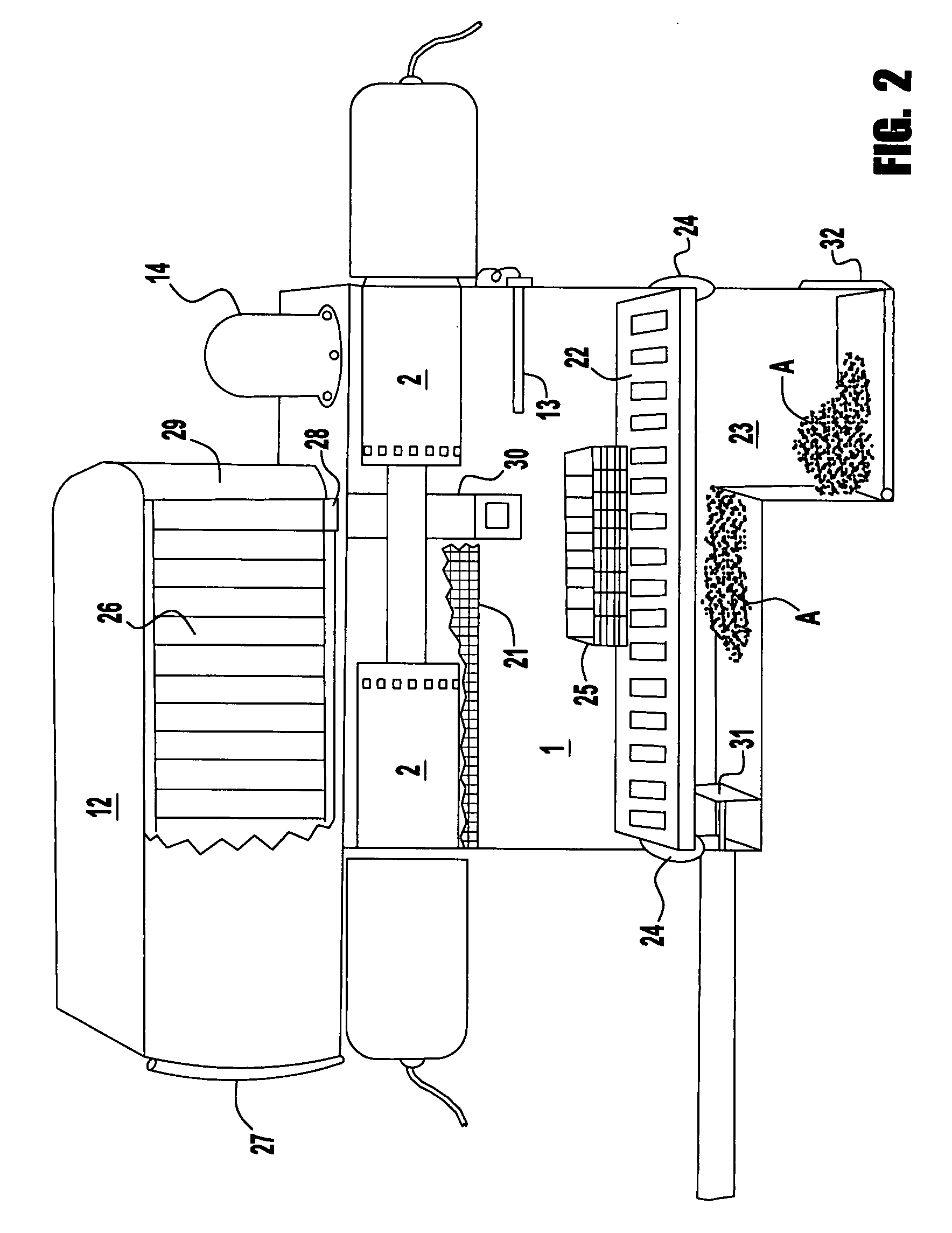Hybrid electric vehicle and towable trailer that uses renewable solid fuel
a technology of renewable solid fuel and hybrid electric vehicles, applied in the direction of electric propulsion mounting, trailer steering, battery/cell propulsion, etc., can solve the problem of not being suitable for providing highly variable motive power, and achieve the effect of extending the overall driving range of the vehicle, and reducing the risk of fuel leakag
- Summary
- Abstract
- Description
- Claims
- Application Information
AI Technical Summary
Benefits of technology
Problems solved by technology
Method used
Image
Examples
Embodiment Construction
[0027]Aspects of select components of the present invention already exist, albeit in crude forms, that may require substantial revision. For example, a standard wood pellet stove may drive a small off-the-shelf steam engine, steam turbine, or Stirling engine, to run an electric generator for recharging the batteries of a commercially available electric car like the Tango. Such a recharging system could be installed on a small trailer, for towing behind a vehicle for trips beyond the normal battery driving range; but not included on shorter trips that do not exhaust the battery's driving range. A preferred fuel source, wood pellets, can be purchased at many locations. Some wood pellet stoves make use of an automatic-feed, thermostatically-controlled hopper that only needs occasional refilling. Thus, the present invention can be integrated in the existing transportation system. Although improvements and refinements are desirable, the technological challenges posed by integrating the p...
PUM
 Login to View More
Login to View More Abstract
Description
Claims
Application Information
 Login to View More
Login to View More - R&D
- Intellectual Property
- Life Sciences
- Materials
- Tech Scout
- Unparalleled Data Quality
- Higher Quality Content
- 60% Fewer Hallucinations
Browse by: Latest US Patents, China's latest patents, Technical Efficacy Thesaurus, Application Domain, Technology Topic, Popular Technical Reports.
© 2025 PatSnap. All rights reserved.Legal|Privacy policy|Modern Slavery Act Transparency Statement|Sitemap|About US| Contact US: help@patsnap.com



